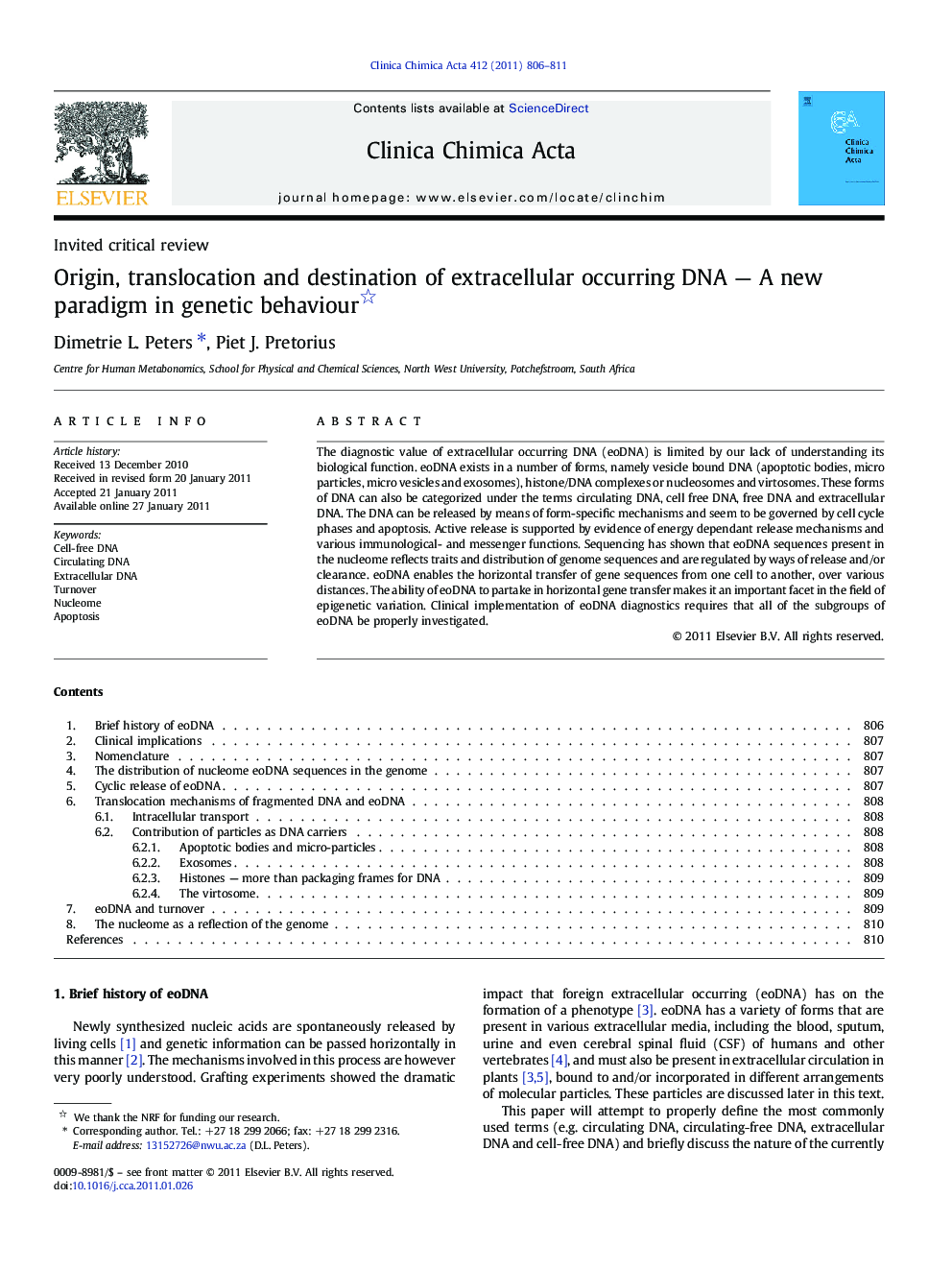| Article ID | Journal | Published Year | Pages | File Type |
|---|---|---|---|---|
| 8316550 | Clinica Chimica Acta | 2011 | 6 Pages |
Abstract
The diagnostic value of extracellular occurring DNA (eoDNA) is limited by our lack of understanding its biological function. eoDNA exists in a number of forms, namely vesicle bound DNA (apoptotic bodies, micro particles, micro vesicles and exosomes), histone/DNA complexes or nucleosomes and virtosomes. These forms of DNA can also be categorized under the terms circulating DNA, cell free DNA, free DNA and extracellular DNA. The DNA can be released by means of form-specific mechanisms and seem to be governed by cell cycle phases and apoptosis. Active release is supported by evidence of energy dependant release mechanisms and various immunological- and messenger functions. Sequencing has shown that eoDNA sequences present in the nucleome reflects traits and distribution of genome sequences and are regulated by ways of release and/or clearance. eoDNA enables the horizontal transfer of gene sequences from one cell to another, over various distances. The ability of eoDNA to partake in horizontal gene transfer makes it an important facet in the field of epigenetic variation. Clinical implementation of eoDNA diagnostics requires that all of the subgroups of eoDNA be properly investigated.
Related Topics
Life Sciences
Biochemistry, Genetics and Molecular Biology
Biochemistry
Authors
Dimetrie L. Peters, Piet J. Pretorius,
